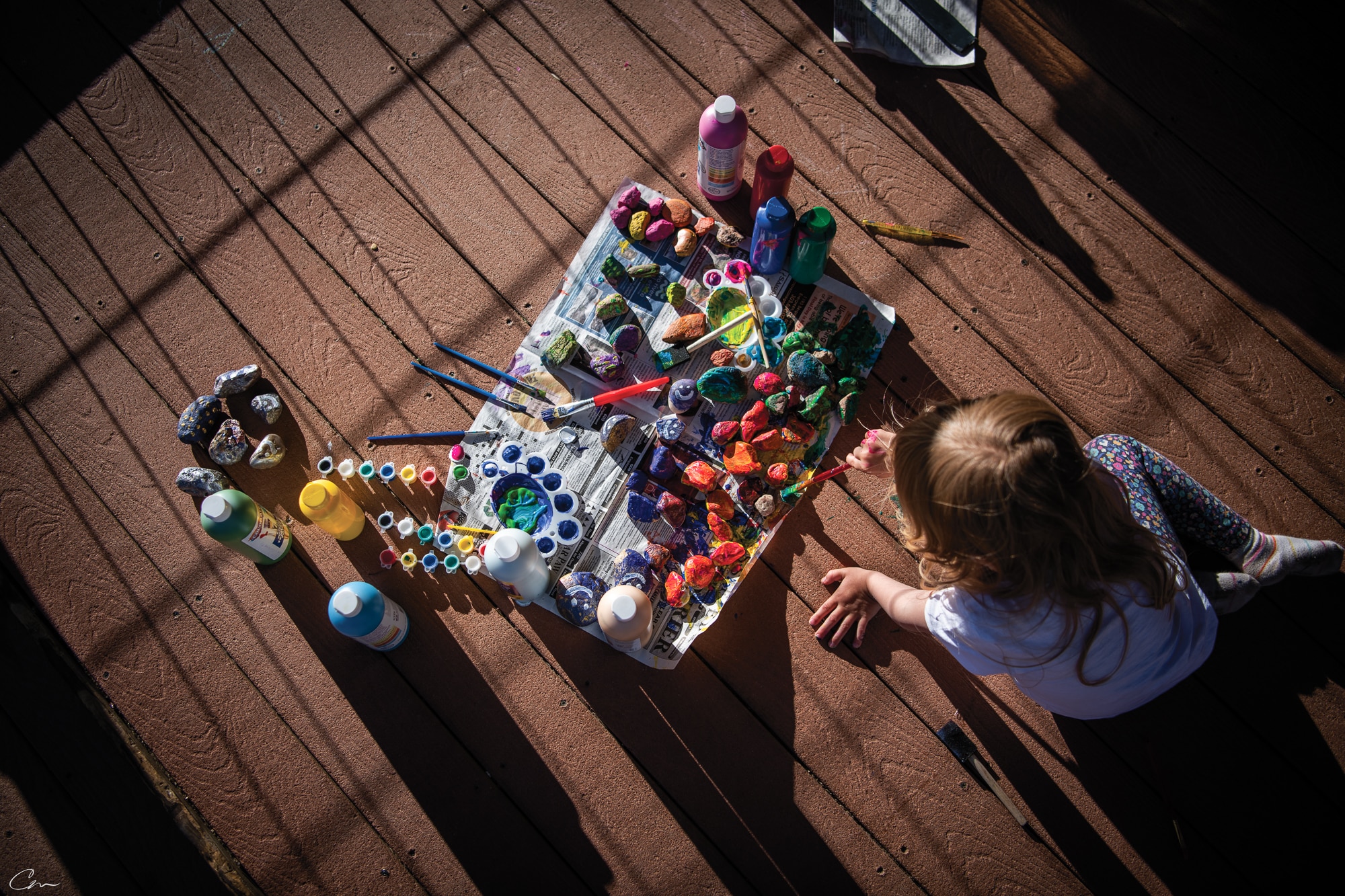This has been a unique year for watching my kids closely. With one taking a gap year and two of them homeschooling, I’ve had a closer, more intimate view all year long. None of what I’m writing today is news to me, but it is the first time I’ve worked through articulating and applying research to it. As a not-helicopter mom, I’m fairly hands-off when it comes to my kids, but taking a closer look at the effects of intrinsic versus extrinsic motivation is fascinating. Having kids ranging between 5-19 at the moment, I have my own little research lab where I’ve been able to watch and understand more clearly.
I’ve spoken about what motivates me in the forms of drive, goals, and grit. I live in a world of almost 100% intrinsic motivation – It is how I am wired. I’m either highly motivated to do something all on my own, or simply not interested at all and no amount of extrinsic motivation can change that. If it is something that must be done, I find a way to reframe it and self-motivate. Pause, Reframe, Savor. The Obstacle Is the Way. I think/hope you get me by now.
But this isn’t true for everyone, especially kids that freely express their opinions on what is asked of them.
Extrinsic Motivation
With my kids, when we ask them to do something they don’t want to do, we hear all about it. Moans and groans, delays, and finally a typically half-assed job is done.
If we offer to pay or barter for the job, it helps, but only to a point. There is often negotiation, seeking to do the very least to get the prize. The motivation is transactional and limited. Basically, typical kid behavior.
Intrinsic Motivation
This is where I see my kids thriving and where I try to steer most of their time and energy. I’m going to break this apart using models from two recent reads. I highly recommend them both!
Steven Kotler, The Art Of Impossible, talks about five required drivers for intrinsic motivation – curiosity, passion, purpose, autonomy, and mastery – the intrinsic stack.
- Curiosity – This is the foundational ingredient, a basic interest in something.
- Passion – An amplification of curiosity.
- Purpose – Finding connection between a passion and cause greater than the self.
- Autonomy – Freedom to pursue the purpose.
- Mastery – Desire to continually improve the required skills.
Michaeleen Doucleff, Hunt, Gather, Parent, describes three ingredients required for intrinsic motivation – connectedness, autonomy, and competency.
- Connectedness – When a child feels connected, to a parent, teacher, whomever, they will naturally want to work harder, together.
- Autonomy – With freedom to come to, and leave, a task on their own, a child is much more likely to do the task.
- Competency – The sweet spot where the task is not too difficult but also not too easy.
Doucleff goes further, illustrating where most of us go wrong – PRAISE!
Goodbye, Praise!
Praise is a form of extrinsic motivation. According to Doucleff and her research, it turns out we are the only country constantly praising our kids, even for mistakes – “Great job trying!” We dole out extrinsic motivation and drivers all day long with no room left for the intrinsic and it is squashing our kids.
“Praise is a tricky beast. It can fizzle with a kid for many reasons, especially when the praise doesn’t feel genuine, doesn’t seem justified for the accomplishment, or is simply ever present. When a child’s every positive action garners a “Good job” or “Nice,” then praise can undermine their intrinsic motivation, making children less likely to do a task in the future.
Praise has another pitfall—a big one. It can cause strife among siblings, because praise breeds competition. Psychologists have found that when young children grow up hearing frequent praise, they learn, from an early age, to compete with siblings for approval and attention from their parents. The lack of praise may be one reason Maya siblings work well together (and fight less than American siblings). They don’t need to compete with one another for verbal kudos.” – Michaeleen Doucleff, Hunt, Gather, Parent
Hello, Acknowledgement!
“Acknowledgment from parents fuels the child’s interest in a task,” says psychologist Lucia Alcalá. “I think that it gives the child motivation to help more. A child sees that their contribution matters and they’re helping the family. That’s more powerful than any praise.”
“Instead—and this is key!—the parent pays attention to what the child is doing, and then builds off the child’s idea. As a result, the parent sets up a beautiful cycle of collaboration, wherein the child or parent contributes an idea and the other takes the idea and expands it.” – Michaeleen Doucleff, Hunt, Gather, Parent
I see this in action with my kids ALL. THE. TIME.
5 Years Old – Fly or Fail
It comes out most often without daughter, age 5. She is an intensely creative soul and when she gets an idea in her head to do something, she runs with it. This could be deciding to spend several days painting the rocks in the outside gardens (image at the top of this post), singing a song on stage at camp, making new Halloween costumes in March, spendint hours “redecorating” her room, cleaning her room without being asked, walking the dogs in the name of “training” them, anything. I see her work through and live in both the Kotler and Doucleff models.
But, sometimes, she’ll sit at the table and hastily scribble out a drawing and demand, even shout that David tell her how great it is and how proud he is of her, typically when big brother is present and/or when he is on the phone. She is competing for attention and doing it 100% for the praise. There is no shred of intrinsic motivation. This lets both David and I know that it is time to put the brakes on the praise.
Her best moments come when she begins with an idea (intrinsic motivation), comes to one of us for help, and we expand upon it together. Collaboration where she leads and we help steer.
With intrinsic motivation she flies, with extrinsic motivation and praise she is ultimately upset, demanding, belligerent, stubborn, and ungrateful. What we hope will be a fun motivator very often turns into upset and tears.
Lego Design versus “School”
The value of intrinsic motivation plays out beautifully with Mason. He is decisive and speaks freely about his opinions. It is nearly impossible to make him do something. When schools were forced to close in 2020, he (and the rest of us) suffered through his required homeschooling. There was zero curiosity and therefore zero intrinsic motivation to succeed at it. There was also no connectedness, space for autonomy – who cares about competency at that point?

When we paid attention to the lack of everything – interest, joy, actual learning, life value – we saw that he needed something different. Watching interest and life spark fade in a child is sad – no thank you!
His curiosity and passions are with Lego design and building. He comes to that all by himself, without being asked or told. We hear him in his Lego space raking through his neatly organized bins (can you hear that Lego raking sound?) at all hours of the day and night, passionately up to his elbows in a new project, flowing through Kotler’s drivers of intrinsic motivation. I don’t care what time it is – I love knowing that he is in his zone, learning, growing, flowing. Mason, that sound literally makes my face hurt with smiling!
His mentor seems to intuitively understand what Mason needs, too. While he has weekly assignments, there is a lot of room for autonomy, and just the right amount of challenge to allow for competency and mastery.
When Mason has completed a new build, he is so pleased with himself, bouncing off the wall with excitement. Yes, he shows us and asks for feedback, but the pride is his own. Here are his two newest builds:



He shares his work with Lego groups on Flickr, hoping for views, likes, and comments, but he spends way more time viewing, liking, and commenting on the works of others, always looking to learn from others and celebrate their successes.
He’s this guy:

We are working on that with our daughter. She is fiercely competitive, so being happy for others’ wins versus being angry at her loss is difficult right now. She is stuck on the extrinsic motivation of the “win” versus the intrinsic motivation that gives birth to celebrating others.
Growth
It was interesting to see how growth with this last week at camp with Field Day. She had a team – connectedness. Along with her team, they cheered for others’ successes. When she and her partner did not win the three-legged race, they fell in a heap and laughed together rather than being upset at losing. She found the connections she needs to reframe winning and losing and told me how much more fun that was on our car ride home that day. I hope she holds onto that – difficult to do at 5.
Autonomy
Finally, my oldest, age 19. If you recall, he moved out very suddenly a few months ago. I haven’t seen or heard from him much in the meantime, but more than the others, or anyone I’ve ever met for that matter, he is incredibly strong-willed and sure of himself. People often ask me if I’m upset/sad/(insert negative emotion here) with him being gone and I’m just not. Sure, I miss him, but I see that he needs autonomy to follow whatever his passion and purpose might be. We should all have that. This is the path he needs in order to tap into his intrinsic motivation and fly with his own life.
Next Steps
For us, we are keeping our eyes open for what our kids are curious and then passionate about. This is clearly where they thrive and learn best. They still have to do their chores, but maybe, having analyzed in this way today, we can get creative in reframing the things that typically require extrinsic motivation into interesting, intrinsically motivated contributions. My gears are turning.
How about you? What do you see of yourself? Your kids or other family members and interactions with them? How does intrinsic versus extrinsic motivation seem to work for you?
If you have landed on this page from an external link, please go HERE to read from the beginning. Otherwise, click on the next title below to continue.


Leave a Reply
You must be logged in to post a comment.